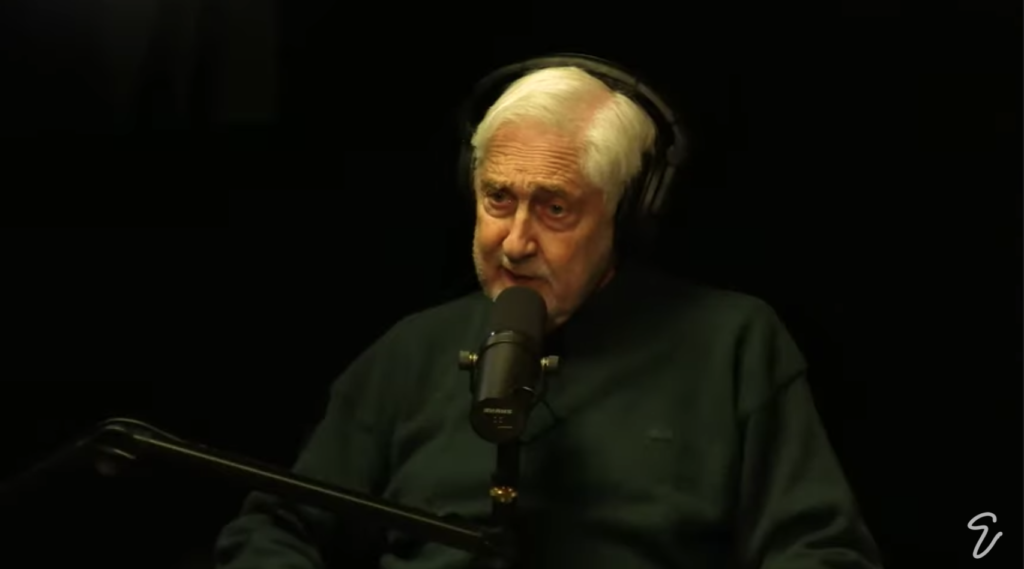Paul Von Blum shares insights into early childhood, experiences and struggles
The activist is opening up about time as a young child in Pennsylvania during episode four of 'Eric's Perspective' podcast
In the fourth episode of Eric’s Perspective podcast, political and civil rights activist Paul Von Blum recounts his life experiences from early childhood in Pennsylvania to his experienced years spent teaching, all laden with threads of his struggles and contributions towards projecting African-American art.
Eric Hanks talks with senior lecturer at UCLA Von Blum as he takes him through a personal journey that has culminated in the promotion and projection of art.
Von Blum begins with the ugly details of his early childhood in the state of Pennsylvania. He narrates his early struggles with his parents in Levittown, PA, against the Ku Klux Klan as early as 1957. At the time, Von Blum was still 14 and had to testify against the movement that sought to maintain systematic color lines against Blacks in the community. Von Blum recounts having had to endure the label of “Ni**a lovers,” a term he says he relates very strongly with due to his experiences.
He also reveals the systematic segregation and blacklisting his family had to endure because of the struggle. The discrimination caused his dad to lose numerous jobs and ultimately forced their relocation to California to rebuild their lives. Here, Von Blum lets us know of his deep-rooted conviction to continue to identify with the Black community, having to juggle his academic career with numerous demonstrations in Georgia as well as Alabama.
Von Blum also recounts being arrested at the Bank of America, having just graduated and moved to Berkeley, California. He is taken to jail and later to trial in what he calls “a joke” as he is convicted along with few other defendants within an hour. Later on, he is taken to the judge’s chamber, where he is told that he will be placed on probation under the condition that he goes to law school or face imprisonment in the San Diego County jail for six months. Von Blum agreed to attend law school in Berkeley with enormous reluctance.
When asked how he transitioned from being a lawyer into an art aficionado, he explains that the Dean of Instructions needed a political science teacher. From there, he was hired in the Department of Rhetorics, and according to him, it took him barely an hour in Golden Gate College to realize that this was his life calling. Four years later, he writes his first book of many, The Art of Social Conscience, which focuses on political and social art history.

He also recalls his love for artworks and morels that resonated with him and his struggles. On writing his second book on American political art, he realizes a deficiency of interaction with Black artists. He recalls a phone call with a “person that changed my life,” Professor Samella Lewis, the “Dean of African American Art historians” as he calls her.
She encourages him to go ahead to write about Jacob Lawrence, published in the Black Editorial. In 1980, after moving to Los Angeles, he went to the Brockman Gallery, and his love and insight into art continued to deepen significantly. His interactions and meetings with Black artists, such as Cecil Ferguson, helped him understand the struggle to make African-American art great and part of the scenes.
He also recounts fondly as he begins to write, teach and project art in his books, he is accepted warmly in this community and is given various artworks for his personal collection, much to his joy. He also describes his struggles in the university to push for the study of art. This study leads him to begin teachings into greats like Henry Ossawa Tanner and Bannister, studies that force him into rigorous teaching routines as he also juggles granting bail to demonstrators in prison.
As he continues to write, he expresses his excitement at the opportunity to explore and to project “women and men of extraordinary artistic quality.” He reiterates that his intention, despite the obvious constraints of his age, is to continue to push and magnify this projection and maintain the progress.
Have you subscribed to theGrio’s new podcast “Dear Culture”? Download our newest episodes now!
TheGrio is now on Apple TV, Amazon Fire, and Roku. Download theGrio today!
